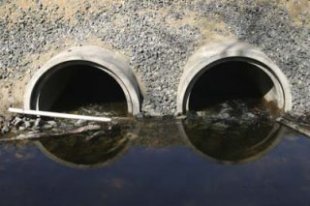
Environmental Protection Act Summary

Protecting human health and the environment
Science has shown us that, along with providing benefits, some chemical substances can be a risk to human health and to the environment.
For decades, in a number of different ways, the Government of Canada has assessed and managed chemical substances used for specific purposes: for example, those used in the workplace, pesticides, or those found in foods and drugs.
In the late 1980s, the Government of Canada recognized that a systematic approach to assessing and managing chemical substances in the environment would help address any that were not already being addressed under existing programs.
The Canadian Environmental Protection Act (CEPA) was passed in 1988 to fill this gap. It was an amalgamation of some existing laws and included new powers for the protection of our health and environment. CEPA was also intended to address any risks from chemical substances in the environment not covered by another law. A review in the 1990's further strengthened the human health and environmental protection components.
CEPA 1999 has a "risk-based" method of making decisions. Risk is determined by looking at the harmful properties of the chemical substance and how much exposure there is for people or the surrounding environment. For example, a chemical substance could be a risk if it is encountered by people on a regular basis and has the potential to cause cancer. On the other hand, some chemical substances could have harmful properties, but measures are in place to limit or eliminate exposure. In such a case, they pose little or no risk.
CEPA 1999 defines "toxic" substances as those that enter or may enter the environment at levels or conditions that:
- have or may have a harmful effect on the environment;
- are or could be dangerous to the environment that life depends on; or
- are or could be dangerous to human life or health.
We call these substances "CEPA-toxic." Before the government can regulate these substances, they have to be added to the List of Toxic Substances.
The Act provides for the assessment and management of chemical substances to prevent, reduce or control environmental and human health impacts of:
- new and existing substances (including products of biotechnology)
- marine pollution
- emissions from vehicles, engines and equipment
- fuels
- hazardous wastes
- environmental emergencies, including accidental spills
Assessment and management of new and existing chemical substances is one of the primary aspects of CEPA 1999.
New Substances
All chemical substances new to Canada must be scientifically assessed for human health and environmental risks. Since 1994, Canada has assessed all new substances made here or brought in from other countries. The Government of Canada prohibits or puts restrictions on the use and disposal of those that could pose a risk to our health and/or the environment.
Existing Substances
More than 23, 000 chemical substances were in use in Canada prior to the development of the New Substances Notification Program.
This group of chemical substances form what is known as the Domestic Substances List (DSL).
Some DSL substances have been assessed and managed in Canada under CEPA 1999 and other laws. For example, 79 individual and families of substances (representing a total of over 1000 discrete substances) have been added to the List of Toxic Substances. This has allowed Environment Canada and Health Canada to put controls in place on these chemical substances.
The vast majority of chemical substances on the DSL had not been examined by health and environmental scientists in the Government of Canada or in other countries. CEPA 1999 set a goal for the Government of Canada to sort through (or "categorize") the DSL. This task was completed by September 2006, as required by the Act.
Through categorization, Canada is the first country in the world to take a systematic look at existing substances. Detailed information is available in the Categorization section of this site.
We now know through categorization that over 85% of the substances on the DSL do not need further action at this time. We also have more information than ever before on the remaining 4, 000. This information will be used to act quickly on high priority chemical substances.






















